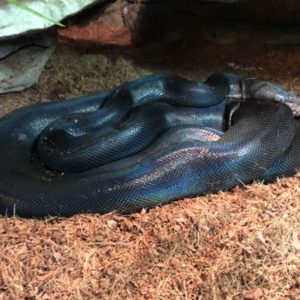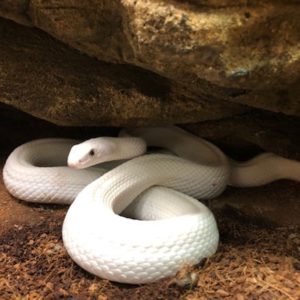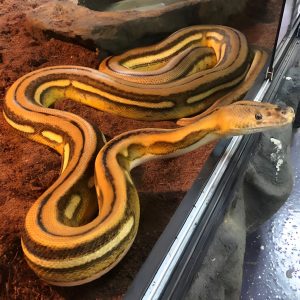Identifying venomous snakes is not simple and can include anatomical and behavioral details. Depending on the species, it is recommended to keep your distance.

Fer-de-lance snake among leaf litter and forest cover.
PHOTOGRAPHY BY CHARLIE HAMILTON JAMES
How to recognize if a snake is poisonous? In general, looking at the shape of the snake’s head and other anatomical details is one of the characteristics that helps distinguish venomous snakes.
The information comes from the Butantan Institute (Brazil), which is the largest producer of vaccines and serums against venoms from poisonous animals, bacterial toxins and some types of viruses in Latin America.
However, these differences are not always so clear, making recognizing a venomous snake a difficult task. According to the Brazilian institute, one of the safest ways of identification is to observe the presence of the loreal fossa, a small hole between the eyes and nostrils of venomous snakes, which functions as a thermoreceptor organ that is extremely sensitive to temperature variations.
Still, this method is not foolproof. According to Butantan, this structure is present especially in snakes of the family Viperidae, the famous vipers, but it is not found, for example, in coral snakes. “Observation of the loreal pits does not allow us to identify whether the snake is a coral (genus Micrurus). All those that belong to this genus are poisonous,” the institute states on its official website.
What differentiates a venomous snake from a non-venomous snake?
In general, some anatomical characteristics are repeated in venomous snakes:
The scales of venomous snakes are elongated, pointed, and cause a rough sensation to the touch;
Venomous snakes have a triangular head, well separated from the body (except for coral snakes);
The eyes of venomous snakes have a vertically slit pupil.
But these characteristics may not be enough to identify all snakes that may be dangerous. In addition to these traits and the presence of the loreal fossula, there are also significant differences in behavior.
According to Butantan, poisonous snakes usually have nocturnal habits, although they can also be seen during the day. Furthermore, in threatening situations, when encountering humans, for example, harmless snakes tend to flee, while venomous ones tend to coil up and prepare to attack.
Even so, the institute warns that there are exceptions to all these rules for identifying venomous snakes. For example, although all coral snakes are venomous and dangerous, there are so-called false corals, species that imitate the characteristics of a real coral, but do not have venom.
Therefore, as the distinction is a difficult task to perform, Butantan’s recommendation is to assume that all corals are poisonous and stay away to avoid any danger. The institute reports that a coral snake (both true and false) can be identified by its color pattern, consisting of rings of black, red, white, yellow and other strong, vivid colors, usually arranged in sequence.
Additionally, it is essential to seek immediate medical help in the event of an accident with a snake. The Brazilian institute recommends keeping some type of record of the animal, whether photographs, verbal reports of the snake’s characteristics or even taking the animal itself, so that the medical team can identify and treat the case more effectively.





